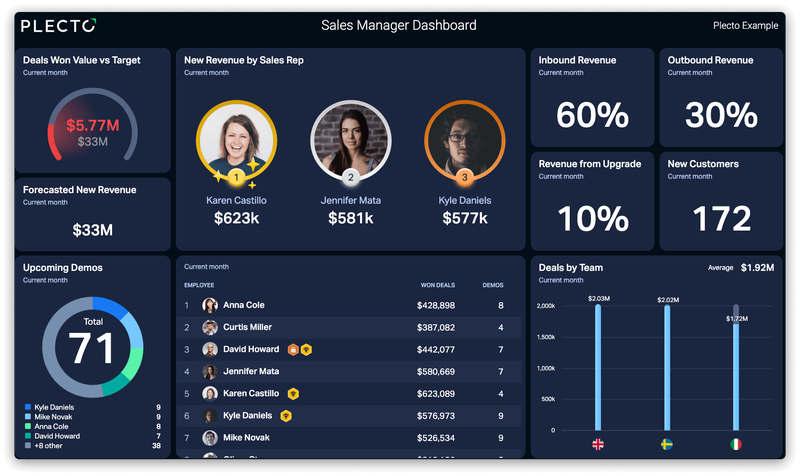Sales are the lifeblood of any successful business, driving revenue, nurturing customer trust and bolstering companies' market presence. While every business has the goal of boosting sales, it's something that's easier said than done. To tap into this sales potential, one super way to do this is through creating a sales scorecard. Check out the rest of the blog to learn how to build your scorecard and how this is an effective strategy to boosting your sales performance.
What is a sales scorecard and why is it important?
A sales scorecard is a tool that helps to evaluate sales team effectiveness. Companies use scorecards to track the performance of their sales teams and individual reps, and managers can make data-driven decisions based on the results. Sales scorecards have become vital tools in the arsenal for successful businesses, because it allows them to make sales improvements and optimize sales team performance.
In this article, you will get valuable information about improving your sales performance and a step-by-step guide on creating a winning sales scorecard:
Step 1: Identify the most important KPIs
Sales KPIs are vital components of a scorecard, as they are the basis for measuring sales performance. These KPIs function as your compass, that help guide your team toward sales success. Below are some examples of common KPIs to include on your scorecard:
- Revenue generated
- Sales volume
- Closed deals
- Conversion rate
- Average deal size
By knowing which KPIs are on track and identifying where there is room for improvement, managers can make a shift and change strategy accordingly.

Step 2: Set clear sales targets
As a manager, your responsibility is to provide your sales team with clear direction by establishing sales targets within the scorecard. It's important that these targets strike a balance between being attainable and ambitious. Ambitious targets ensure that your sales team stays productive, proactive and constantly strives for excellence.
Step 3: Build your scorecard
Once you are ready with sales targets, it's time to create a comprehensive sales scorecard. Scorecards are often built on spreadsheet platforms such as Google Sheets which serve as the central hub for tracking your performance. Here, you can segment your progress into weekly, monthly, or quarterly goals, so you can create manageable milestones for your team.
Although there are several dedicated sales scorecard software out there, it’s still most common to build your sales scorecard on a spreadsheet like Google Sheets. Plecto supports a real-time integration with Google Sheets, enabling you to seamlessly integrate your scorecard onto a Plecto dashboard.
Build your first dashboard.
Start your 14-day free trial today

Step 4: Monitor progress regularly
Don’t wait for deadlines to evaluate your sales team's performance. Constantly evaluate each milestone of your scorecard to make informed decisions promptly. Monitoring your data will allow you to be a proactive manager. By staying a few steps ahead, you will be able to critically evaluate your team’s performance and take on any obstacles that can come up. It is also important to listen to your team and their feedback, which will definitely increase trust and satisfaction among the whole team, which will also boost motivation and increase effectiveness.
Step 5: Analyze the results and revise your goals
Analyzing your sales performance is essential for identifying where your team needs to improve. Be sure to hold regular personal and team feedback sessions to reflect on what went well and what needs to be improved on. As a leader, your role is not solely about holding your team accountable but also providing support and motivation.
And yes, we know what you're thinking; reporting's not fun. However, with Plecto you can streamline your reports, schedule them as needed and select the relevant KPIs. This saves time and ensures that you receive the data necessary for informed decision-making.
Scorecard vs. Dashboard
In summary, a sales scorecard offers a high-level snapshot of sales performance, while a dashboard provides real-time data insights and interactivity. Both are valuable tools, often complementing each other in sales performance. The choice between them depends on your preferences and goals.
If you're interested in visualizing your sales performance and visualizing it on real-time dashboards, sign up for a 14-day free trial with Plecto. Harness the power of data-driven decisions to engage your employees and boost your sales results.




